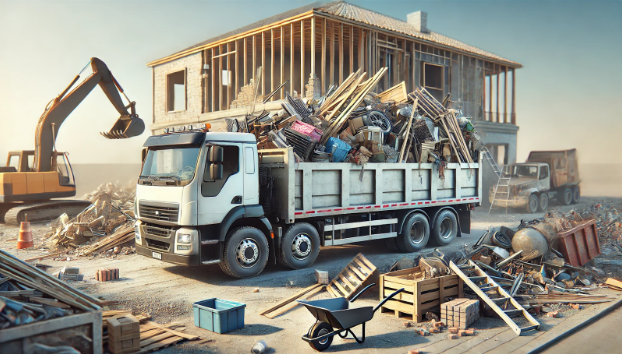
The Complete Guide to Construction Debris Removal
Construction projects create more than structures—they leave behind a trail of debris. Whether it's a DIY renovation or a commercial construction job, managing debris is crucial for safety, efficiency, and environmental responsibility. In this post, we’ll explore what construction debris removal entails, why it matters, and how to handle it effectively.
What is Construction Debris Removal?
Construction debris removal is the process of collecting, transporting, and disposing of waste materials generated during building, renovation, or demolition projects. This includes:
- Concrete and bricks
- Wood and metal scraps
- Glass and plastics
- Hazardous materials like asbestos or paint
These materials require proper handling to prevent accidents, environmental damage, and legal issues.
Why is Construction Debris Removal Important?
- Safety: Piles of debris can lead to injuries or obstruct work areas.
- Environmental Impact: Proper disposal reduces landfill waste and encourages recycling.
- Legal Compliance: Many municipalities have strict guidelines for construction waste management.
Steps for Effective Construction Debris Removal
1. Plan Ahead
- Assess the type and volume of waste your project will produce.
- Identify recyclable materials and hazardous waste.
- Create a timeline for waste removal.
2. Sort Materials
Separate debris into categories:
- Recyclables: Metal, glass, and certain plastics.
- Hazardous Waste: Paints, chemicals, and treated wood.
- General Waste: Non-recyclable materials.
Use labeled bins or areas for organization.
3. Hire a Junk Removal Service
- Look for professionals experienced in construction debris management.
- Verify they follow local waste disposal regulations.
4. Rent a Dumpster
- Choose the right size based on your project.
- Place it in an accessible yet unobtrusive location.
5. Recycling and Disposal
- Partner with local recycling centers for materials like metal and concrete.
- Dispose of hazardous waste through certified facilities.
6. Final Cleanup
- Sweep and inspect the site to ensure no debris is left behind.
- Document the cleanup for compliance if required.
Overview of Debris Categories and Disposal Options
| Material | Disposal Method | Recyclable? |
|---|---|---|
| Concrete & Asphalt | Recycling facilities | Yes |
| Wood | Reuse or compost | Sometimes |
| Metal | Scrap yards | Yes |
| Plastics | Recycling programs | Depends on type |
| Hazardous Waste | Certified disposal sites | No |
Tips for Sustainable Construction Debris Management
- Reuse Materials: Wood and bricks can often be repurposed for other projects.
- Donate Usable Items: Habitat for Humanity and similar organizations accept surplus materials.
- Choose Eco-Friendly Disposal Methods: Opt for facilities that prioritize recycling.
Common FAQs About Construction Debris Removal
Q: What does construction debris removal cost?
Costs vary based on the volume of waste, type of materials, and location. Expect to pay between $300 and $1,000 for most projects.
Q: Can I recycle construction debris?
Yes, many items like metal, concrete, and certain plastics are recyclable. Contact local centers for guidelines.
Q: What are the legal requirements for debris removal?
Local laws dictate disposal methods, especially for hazardous materials. Consult your city or county's waste management office for specifics.
Q: How can I reduce construction waste?
- Plan cuts and measurements to minimize off-cuts.
- Use prefabricated materials where possible.
- Recycle and donate excess items.
Quick & Reliable
We are available by phone or email
Cities we service
Services
All Rights Reserved | Hulk Hauling Junk Removal
